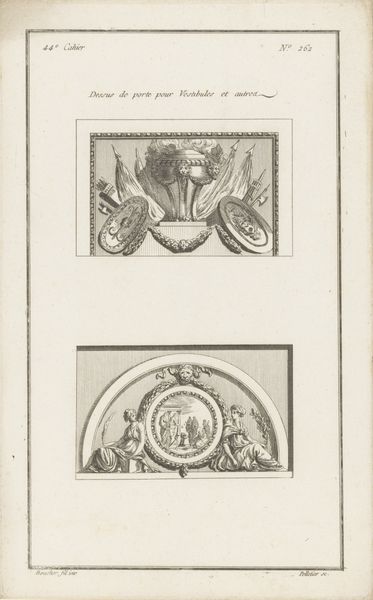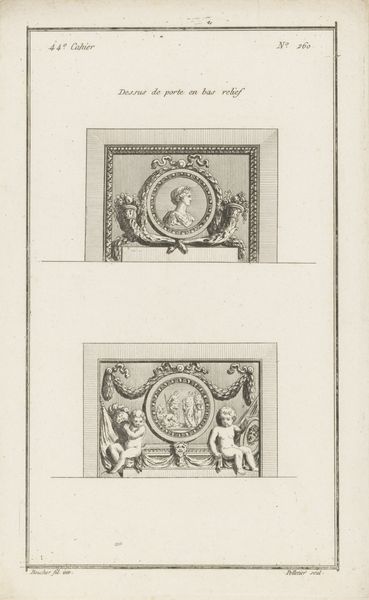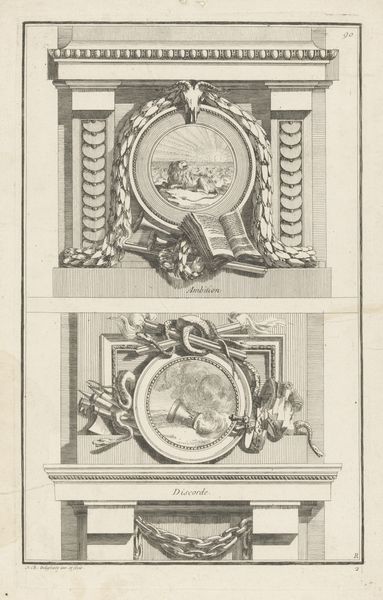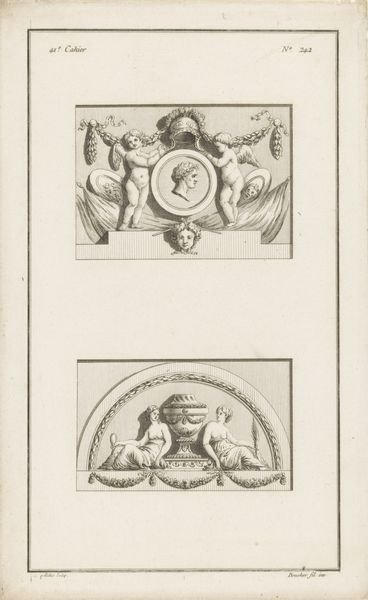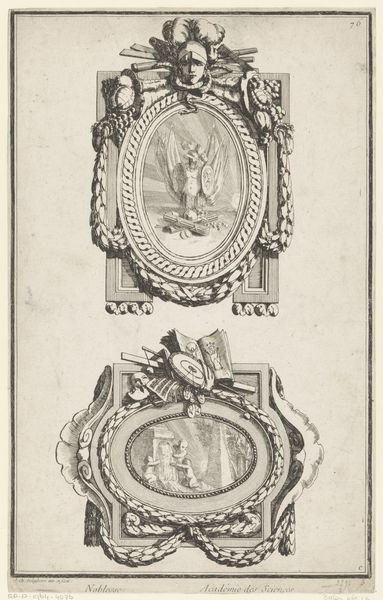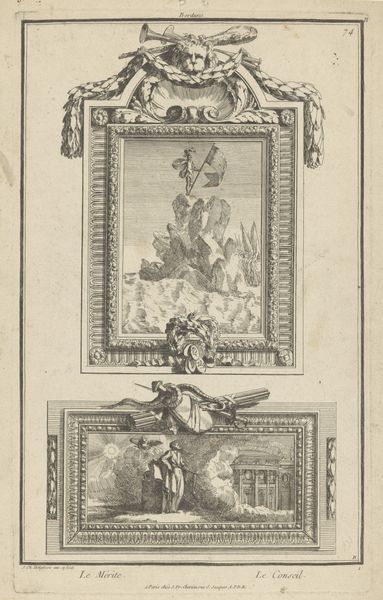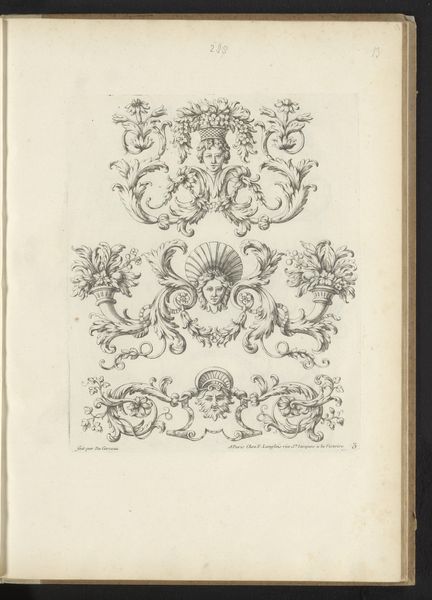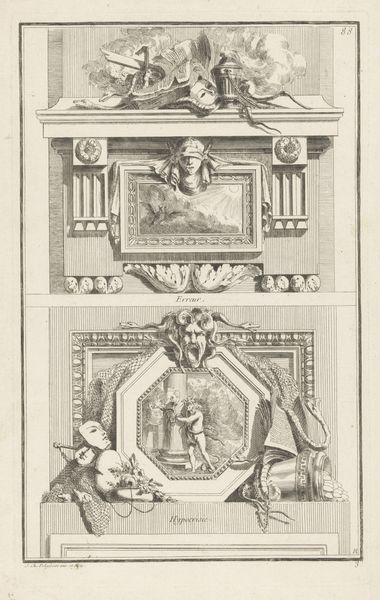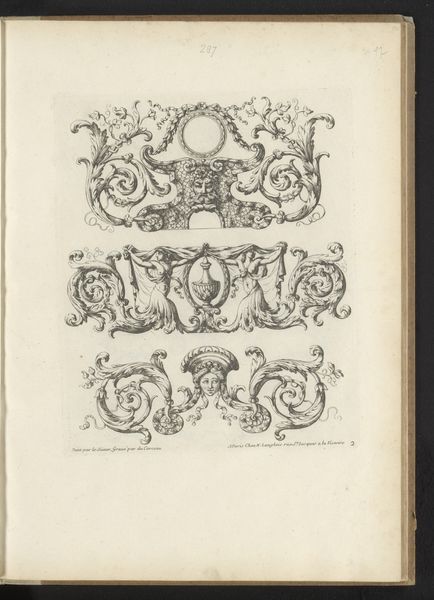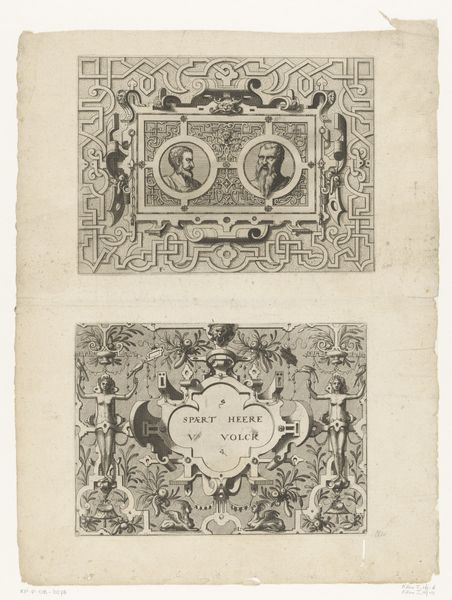
Dimensions: height 338 mm, width 207 mm
Copyright: Rijks Museum: Open Domain
Editor: So, this is "Putti en rookvat" by Jean Pelletier, made between 1772 and 1779. It's an engraving, so a print, featuring these incredibly detailed, almost miniature scenes. It's very decorative, almost like a design for a room. How do you interpret this work? Curator: Well, the very decorative nature you observe hints at its original purpose and the society it reflects. This engraving, produced in the late 18th century, wasn't simply "art" in the modern sense. Consider the political and social function of the decorative arts. Doesn’t this style speak to you of power structures and conspicuous consumption? Editor: I see what you mean. It's not just pretty; it's communicating wealth and status. Like, look at those little cherubs holding garlands, they are so cute but feel more like they’re there to reinforce societal ideals. Curator: Exactly! And let's think critically about these cherubs themselves. Are they truly innocent, or do they serve to naturalize certain values, obscuring underlying power dynamics? The putti evoke a sense of classicism but are used to endorse the decorative, projecting it in official environments and palaces as status elevation symbols. How can we disentangle this association in modern times, when political power must serve the needs of a collective rather than elite interests? Editor: So it's more than just design. It reflects on 18th-century ideas about wealth, beauty, and who gets to enjoy them. It makes me think of who this engraving was intended for, who it excludes, and whose values it upheld. Curator: Precisely! The material tells us who owned and commissioned such designs at a specific time. A closer look uncovers questions regarding accessibility and elitism surrounding aesthetics. Art rarely exists in a vacuum, don't you think? Editor: It's fascinating how this seemingly innocent print can reveal so much about social and power structures! Thanks for shedding some light on the context of its production and historical interpretations! Curator: Likewise. Now we may understand a bit better that aesthetics never serves only aesthetics but responds to precise economical and political agendas.
Comments
No comments
Be the first to comment and join the conversation on the ultimate creative platform.
